20 Million Euros for Digital Development of Rural Croatian Areas
May the 11th, 2023 - A massive 20 million euros is set to be pumped into the digital development of rural Croatian areas which still struggle with weak mobile signals. These so-called white zones where there is no high-speed mobile signal doesn't allow the normal use of digital technologies.
As Poslovni Dnevnik/Darko Bicak writes, as Oleg Butkovic, the Minister of Maritime Affairs, Transport and Infrastructure, announced last week, the aforementioned issue should soon finally be resolved through a project financed from the National Recovery and Resilience Plan 2021-2026.
More rural Croatian areas are the targets for improvement
"In terms of the development of the 5G network, we're in the lead in terms of Europe, and we have a significant competitive advantage in terms of qualified workforce in the ICT sector, as well as regulations that enable so-called digital nomads. There's also a project under way that will cover areas across fourteen different counties with a high-speed mobile signal, and these are all places that currently don't have high-quality internet," explained Minister Butkovic.
However, while Croatia may well be performing well when it comes to 5G, the country remains at the very end of the line in terms of actual coverage with 4G and 3G networks, which is why the government has launched the public discussion procedure entitled "A call for expressions of interest for the development and implementation of passive electronic communication infrastructure in rural and sparsely populated areas". It is worth around twenty million euros in total.
This document defines the target areas for the possible construction of electronic communication infrastructure as part of such an investment. As stated by the proponent, the preparation of the Feasibility Study is underway and, following this and a public consultation on the expression of market interest, the final areas for the implementation of the investment in question will be determined.
"The investment's target areas are rural Croatian areas that include parts of counties with extremely low socio-economic indicators, meaning those primarily characterised by extremely low demographic, social and economic conditions compared to the national average," the Maritime Affairs Ministry stated, adding that investment in Croatia's 5G networks must be located in areas where mobile networks haven't been introduced or where only mobile networks that can support mobile services up to 3G are available and where there are no 4G or 5G mobile networks, nor is their introduction planned within the next three years.
It is estimated that around 58 poles will be installed, however, the exact selection of their locations and their final numbers will be defined only by the Feasibility Study, the preparation of which is currently underway. In the proposal, it has been noted that the poles won't be placed in all acceptable areas defined through this public consultation, but in those confirmed by the Study as possible locations that will justify the economic profitability of the investment.
As part of the Study, the exact needs for certain types of communication and the need for signal coverage in precisely defined areas will be determined, and in accordance with the results, passive infrastructure will be built to connect the infrastructure points. Croatia also lags behind the EU average in this area (broadband infrastructure coverage), and although in the category of new generation fixed broadband network coverage, it has equaled the EU average, it is still far behind in the widespread use of 100 Mbps broadband access and isn't ready for the introduction of a 5G network.
In addition to all of the above, due to high construction costs and a reduced population, there are insufficient investments in digital development in more rural Croatian areas in general.
For more, make sure to check out our dedicated news section.
8 Platforms Developed for Croatian Village Digitalisation Project
January the 12th, 2023 - Eight platforms have been developed for Croatian village digitalisation as the country hopes to help more rural areas catch up and transform as we go forward.
As Josipa Ban/Poslovni Dnevnik writes, the CEKOM Food&Rural project, which will enable the Croatian village digitalisation and the overall digital transformation of more rural areas, was successfully completed recently. According to InfoDom, the company that developed as many as eight platforms as part of the wider project, all of them will be free for all of their users.
"Our experts and partners in the project have successfully realised the expected outcomes of the Nikola Tesla Innovation Centre. This is in relation to good practices for the application of digital technologies in agriculture and rural development that will be available to 170,000 OPGs (family farms) and small and medium-sized companies that will be able to digitise their business processes," said Boris Blumenschein, head of the CEKOM project, who is also a member of the InfoDom Management Board.
Cooperation to find a proper solution to Croatian village digitalisation and allowing rural areas to keep up
This project is worth a massive 13.14 million kuna and was co-financed from the European Regional Development Fund in the amount of 7.7 million kuna. It should contribute to greater competitiveness of entities based in the country's more rural areas, accelerate social development and work to preserve the populations living in rural areas. Villages and more rural parts of the country are the primary victims of the demographic crisis, and their local populations are increasingly emigrating due to worsening living conditions and difficulties finding secure jobs.
This project in which, together with InfoDom, the Institute for Informatics Activities of Croatia (ZIH), the Faculty of Organisation and Informatics (FOI) and the Nikola Tesla Innovation Centre all participated, resulted in the creation of eight brand new products, all of which form something unique and are available for free use.
An IoT platform, a decision support system, a food distribution platform, an ecosystem development portal, a checklist and self-check system, a knowledge base, a BigData platform and a healthcare and rural tourism portal have now all been successfully developed. Registration on these platforms, the aforementioned groups assure, is simple and quick.
Food processing and distribution
"Through the research and development activities carried out within the scope of this project, a digital ecosystem of agrotechnological solutions was created for the successful commercialisation of CEKOM results related to the development of mechanisms for the more efficient use of resources, the application of knowledge and innovation in food production, processing and distribution, and the system will continuously connect mutually complementary groups of companies, individuals or things that share standardised solutions,'' they explained from InfoDom.
All of the developed platforms should result in numerous positive outcomes when it comes to Croatian village digitalisation and allowing rural areas to keep up, from the advancement of technological development, commercialisation, the application of various innovations, the branding of the food industry and other local products through the application of innovative design and promotional activities.
Ultimately, all this should strengthen the competitiveness of the food industry in rural areas of Croatia. All that remains is for OPGs and small and medium-sized enterprises to start using all these solutions.
For more, check out our dedicated business section.
Discovering Authentic Croatia's Secrets With Seoski Tourism
November 4, 2021 – Village tourism or countryside tourism - Seoski tourism in Croatia - offers authentic, traditional experiences. Aleksandra Kuratko, secretary of Udruga ruralnog turizma Hrvatske (Croatian Rural Tourism Association) tells us more about it, and their work to help facilitate it
Croatia's visitor offer is evolving and expanding. There are exciting aspects of authentic Croatia to be discovered. Away from the beach, villages inland often look remarkably similar to how they did one hundred years ago. There, crops are grown and produce made in ways passed down through generations of families. And, in some lucky instances, these family farmers are willing to open their doors, invite you inside and show you how they live.
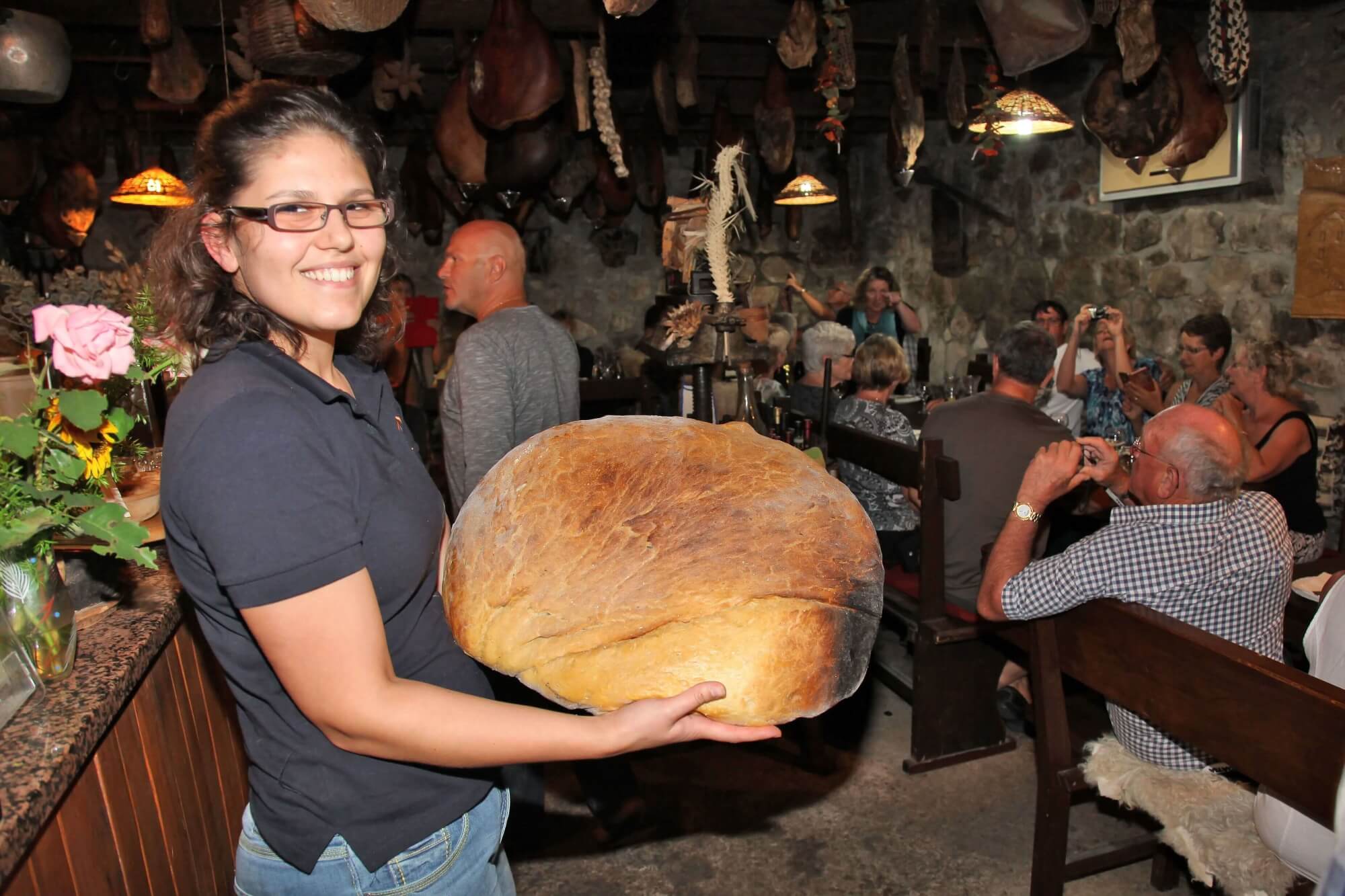 Bread from the peka at Agroturizam Antunović on Pelješac
Bread from the peka at Agroturizam Antunović on Pelješac
Seoski Tourism – translated as either village tourism or countryside tourism – is just that. Family farms that offer hospitality. These are some of the most homely and most welcoming accommodation experiences you can have in Croatia. Offering sights and sounds, tastes and flavours that you can't find anywhere else, visits or stays in Seoski Tourism places have long been loved by locals for weekend breaks or holidays outside peak summer. But, increasingly, these authentic Croatia experiences are being discovered by international visitors.
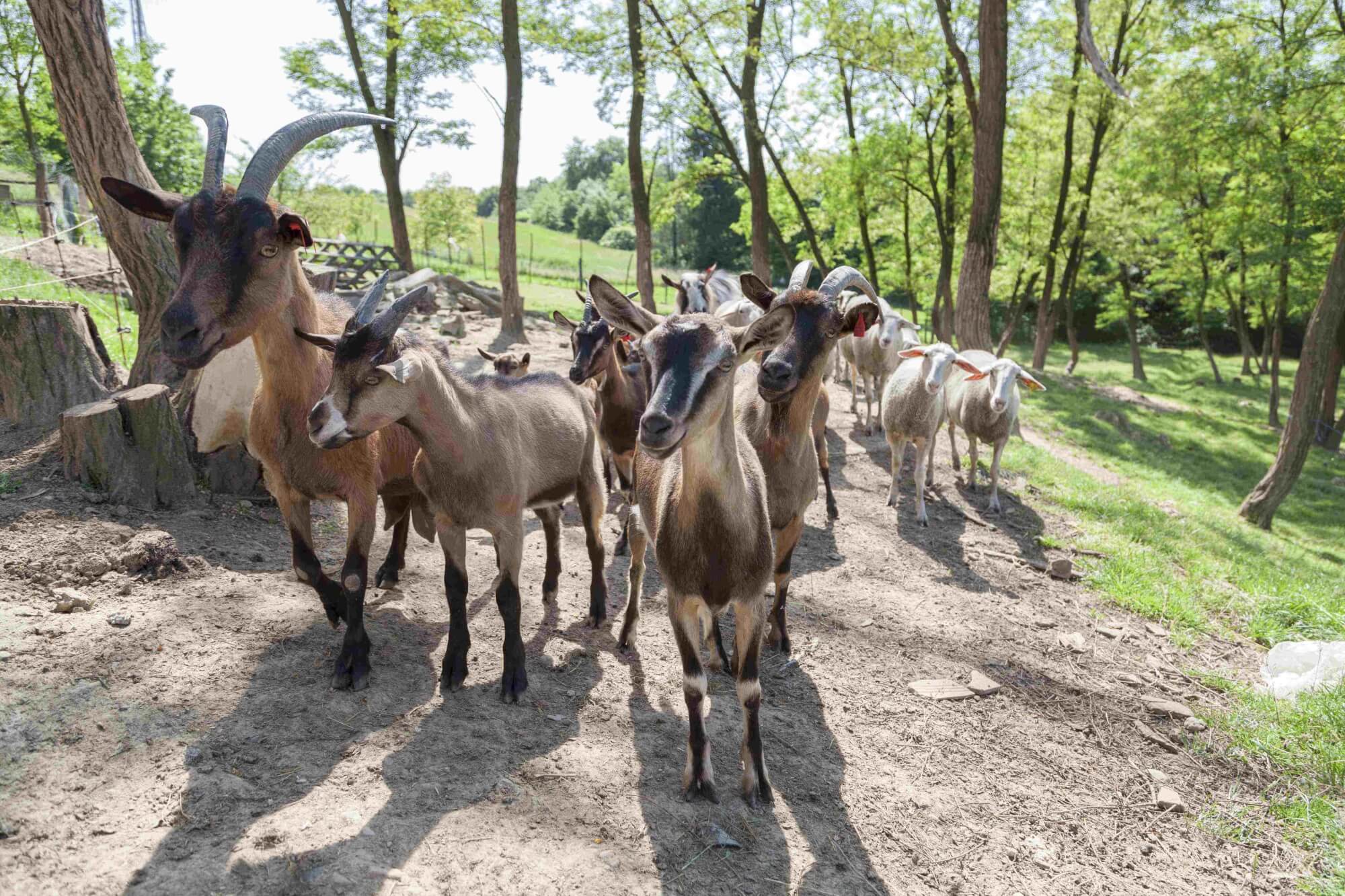 Moslavina goats at Kezele family farm © Davor Konjikušić
Moslavina goats at Kezele family farm © Davor Konjikušić
One institution trying to facilitate the growth in interest is Udruga ruralnog turizma Hrvatske - Croatian Rural Tourism Association. Since it was formed in 2016, they have tried to bring together Croatia's family farm hosts, to promote them and educate them, and to build bridges between these independents and tourist boards, tourist agencies, educators and even the wider world outside Croatia.
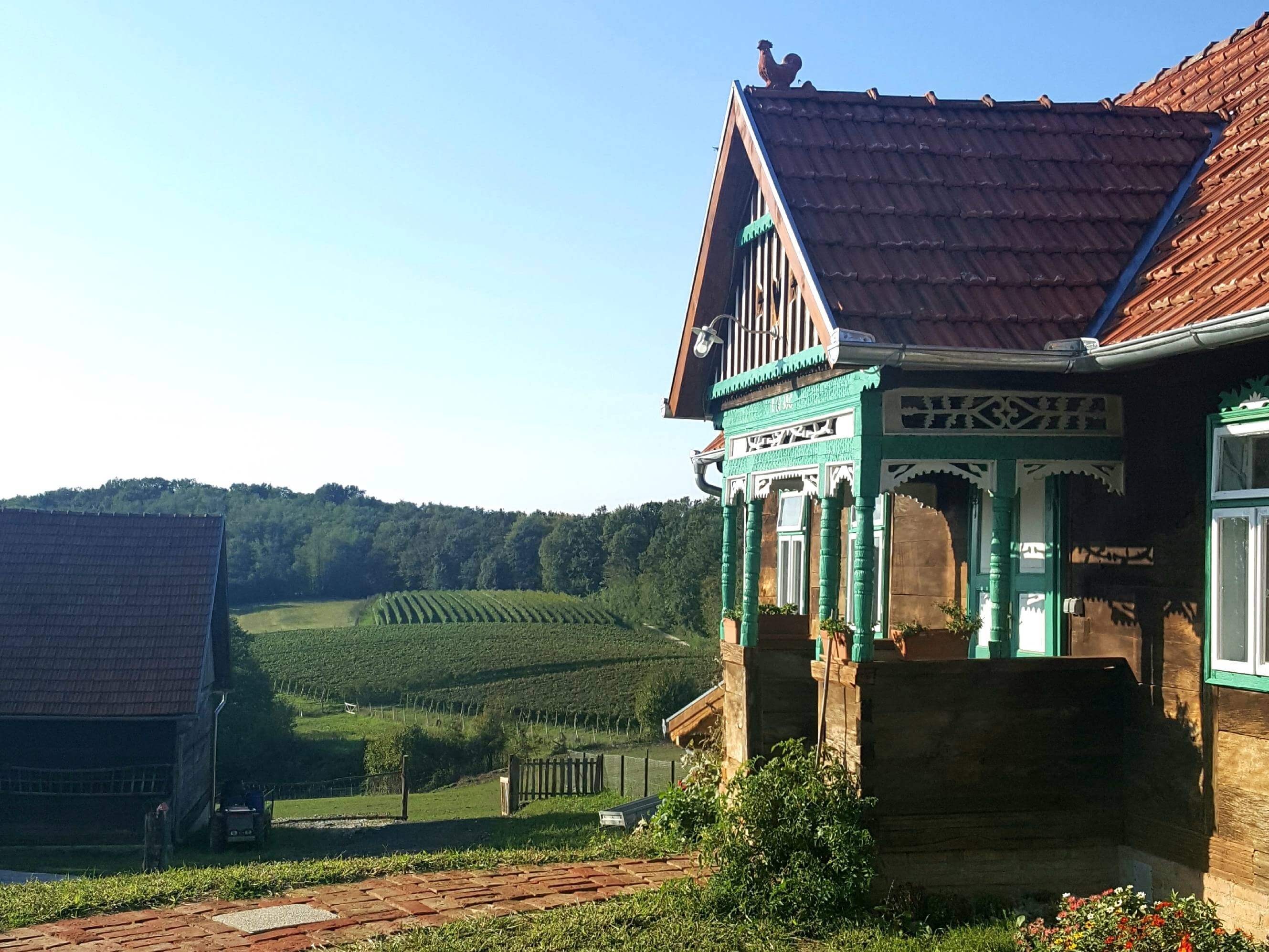 Seoski turizam Kezele in Šumećani, on the border of Zagreb County and Bjelovar Bilogora County © Davor Konjikušić
Seoski turizam Kezele in Šumećani, on the border of Zagreb County and Bjelovar Bilogora County © Davor Konjikušić
Based in Ivanić-Grad, Zagreb County, the Croatian Rural Tourism Association is currently touring the length and breadth of the country, holding workshops with as many Seoski Tourism family farms that will come. And if the farmwork doesn't allow them free time, then they can attend Croatian Rural Tourism Association workshops online.
On the eve of the association's online Seoski Tourism workshops for Central Croatia and Slavonia, TCN interviewed Aleksandra Kuratko, secretary of Udruga ruralnog turizma Hrvatske, to find out more about Seoski Tourism in Croatia.
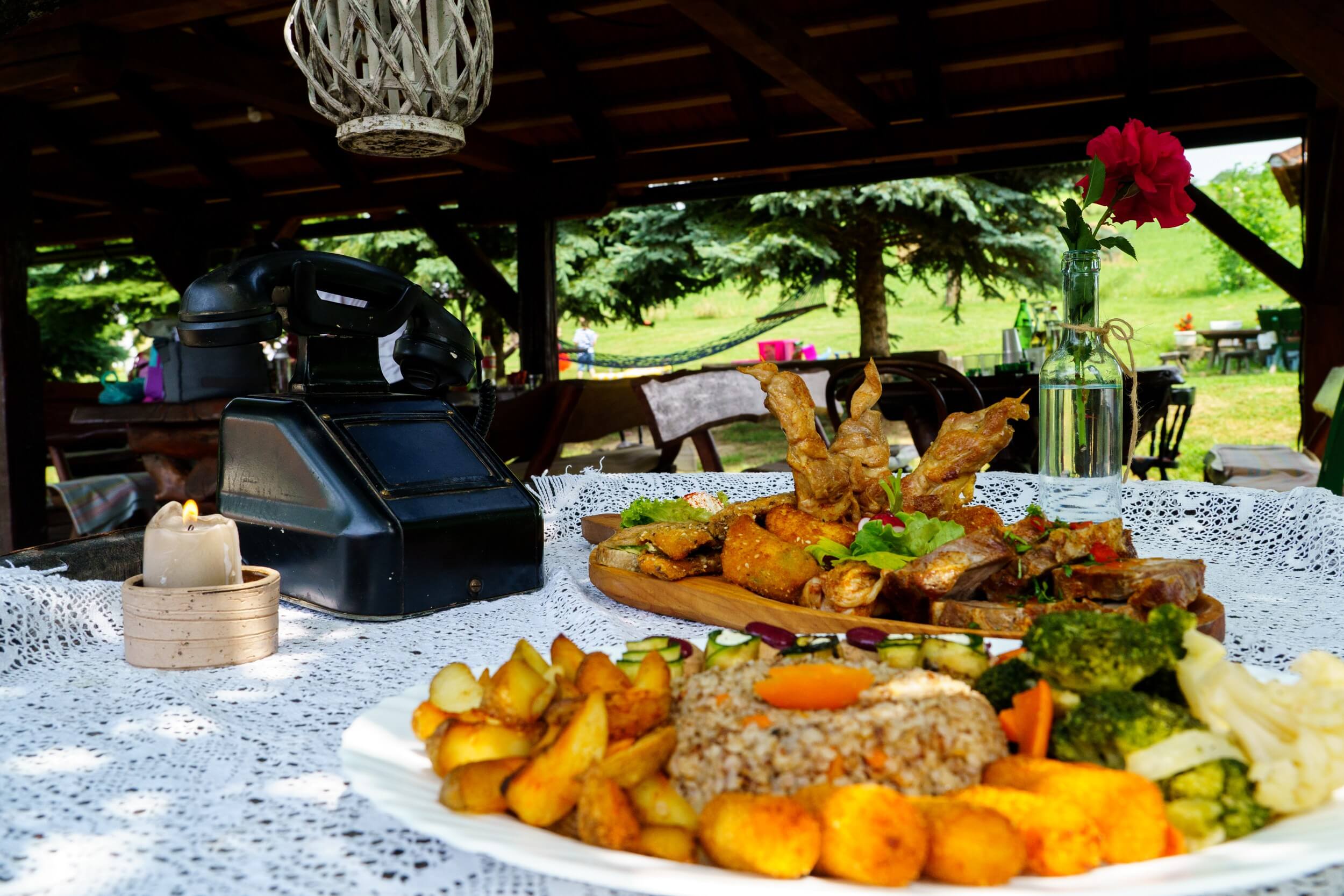 Prigorje specialties at Rakić family farm
Prigorje specialties at Rakić family farm
My name is Aleksandra Kuratko and I am secretary of Udruga ruralnog turizma Hrvatske. As an association, we are 5 years old.
We have 35 members, most of whom are service providers in what we call Seoski Tourism. We also have several tourist boards and two educational institutions as members.
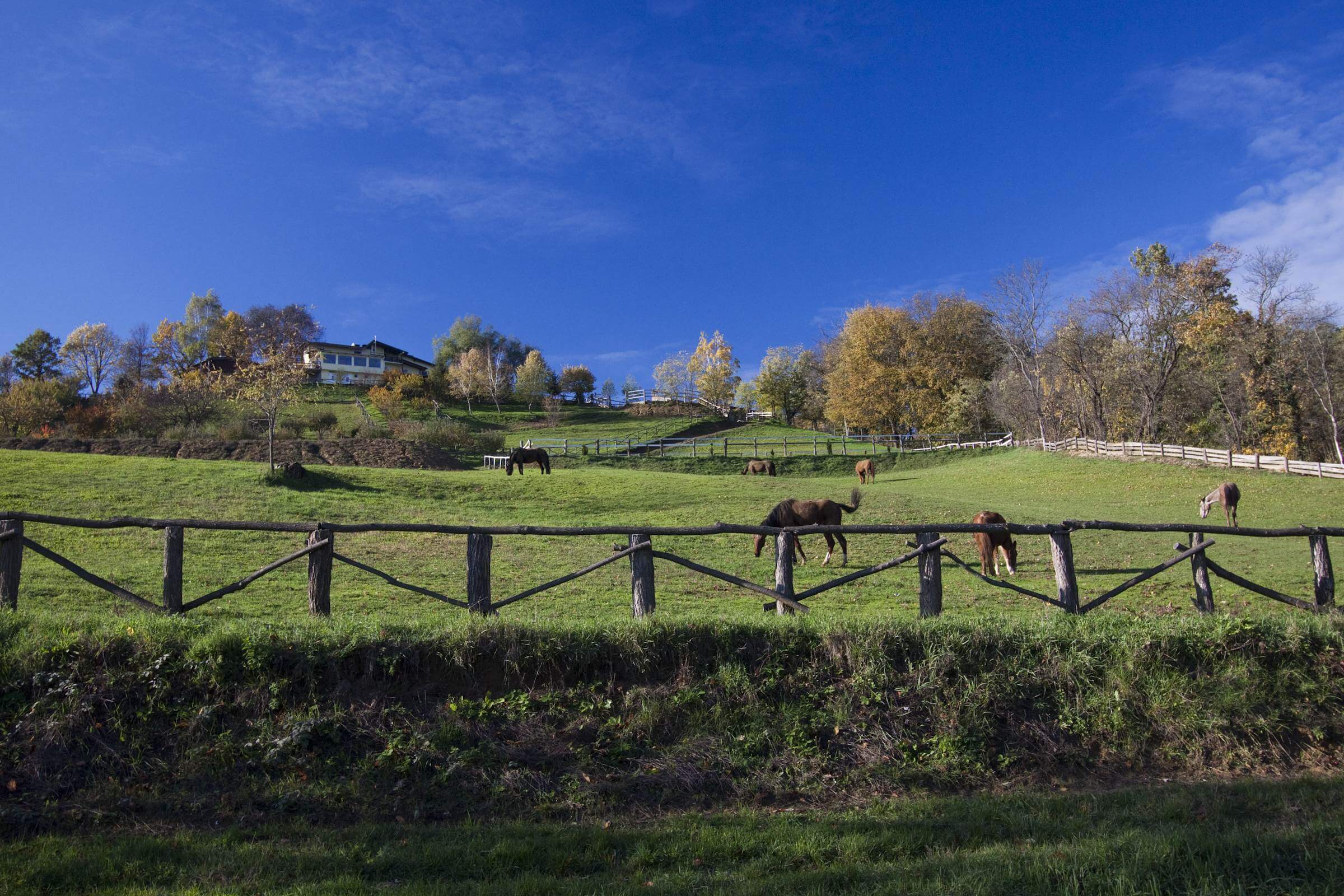 Bilogora horses in autumn at Agroturizam Na malenom brijegu © Vladimir Vlajinić
Bilogora horses in autumn at Agroturizam Na malenom brijegu © Vladimir Vlajinić
Seoski tourism is not quite the same as rural tourism, because rural tourism is many different types of tourism that happen in rural areas. Seoski tourism - which you might translate as village tourism - is quite specific. We assemble people who work in agriculture and who, at the same time, are also offering hospitality. In English, you might call them Farm Stays. Or Agro-tourism – a merging of agriculture and tourism.
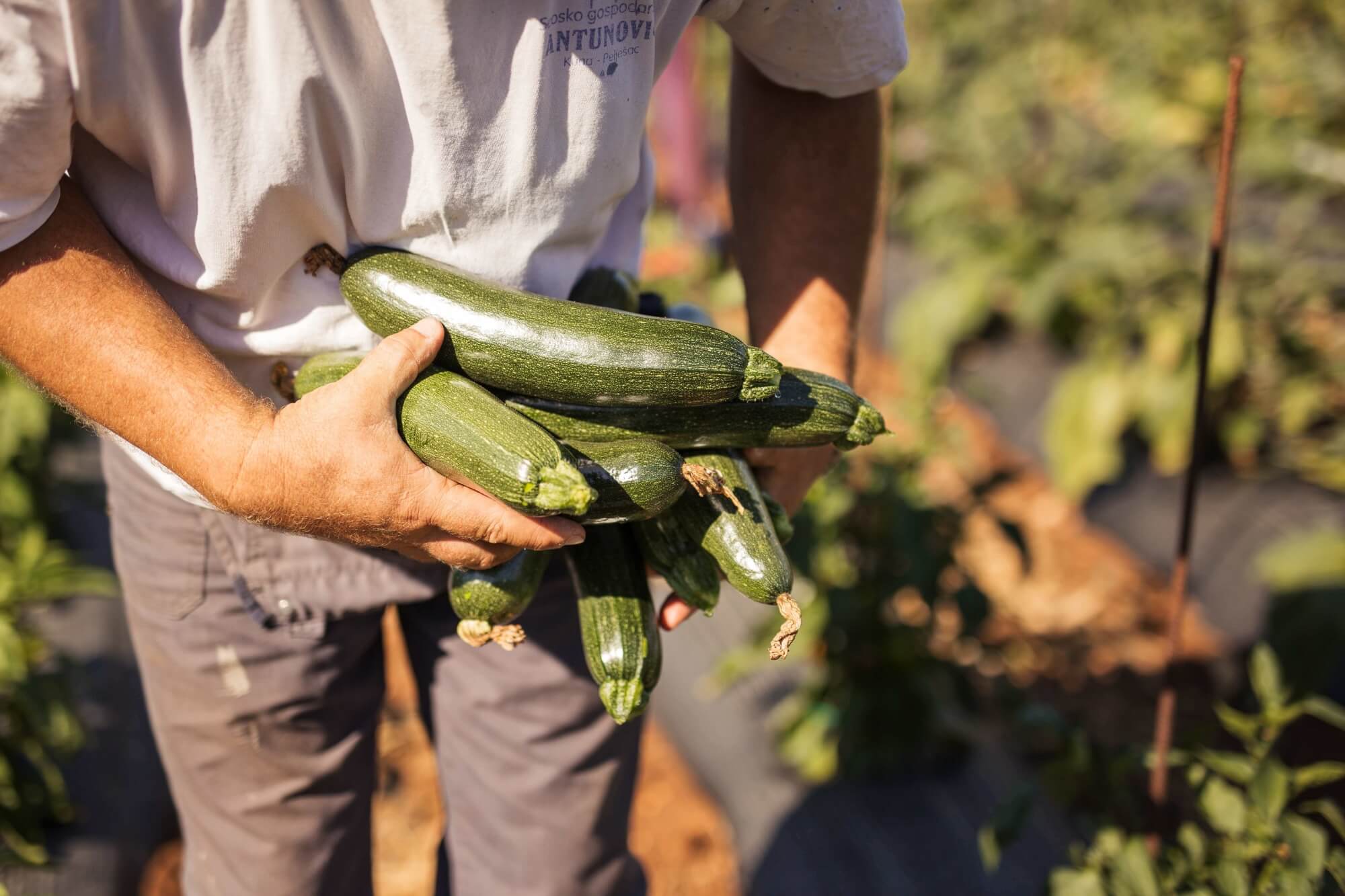 Fresh vegetables at Agroturizam Antunović on Pelješac
Fresh vegetables at Agroturizam Antunović on Pelješac
People who work on agricultural estates often take care of local cultural heritage. For example, they might maintain and renew traditional wooden or stone houses. Many also have etno collections, in which they preserve different objects from their region. Some of these objects might have been used in agriculture and households hundreds of years ago. So, they are preserving the cultural heritage of Croatian villages. This is what we call material cultural heritage. But, there's another kind.
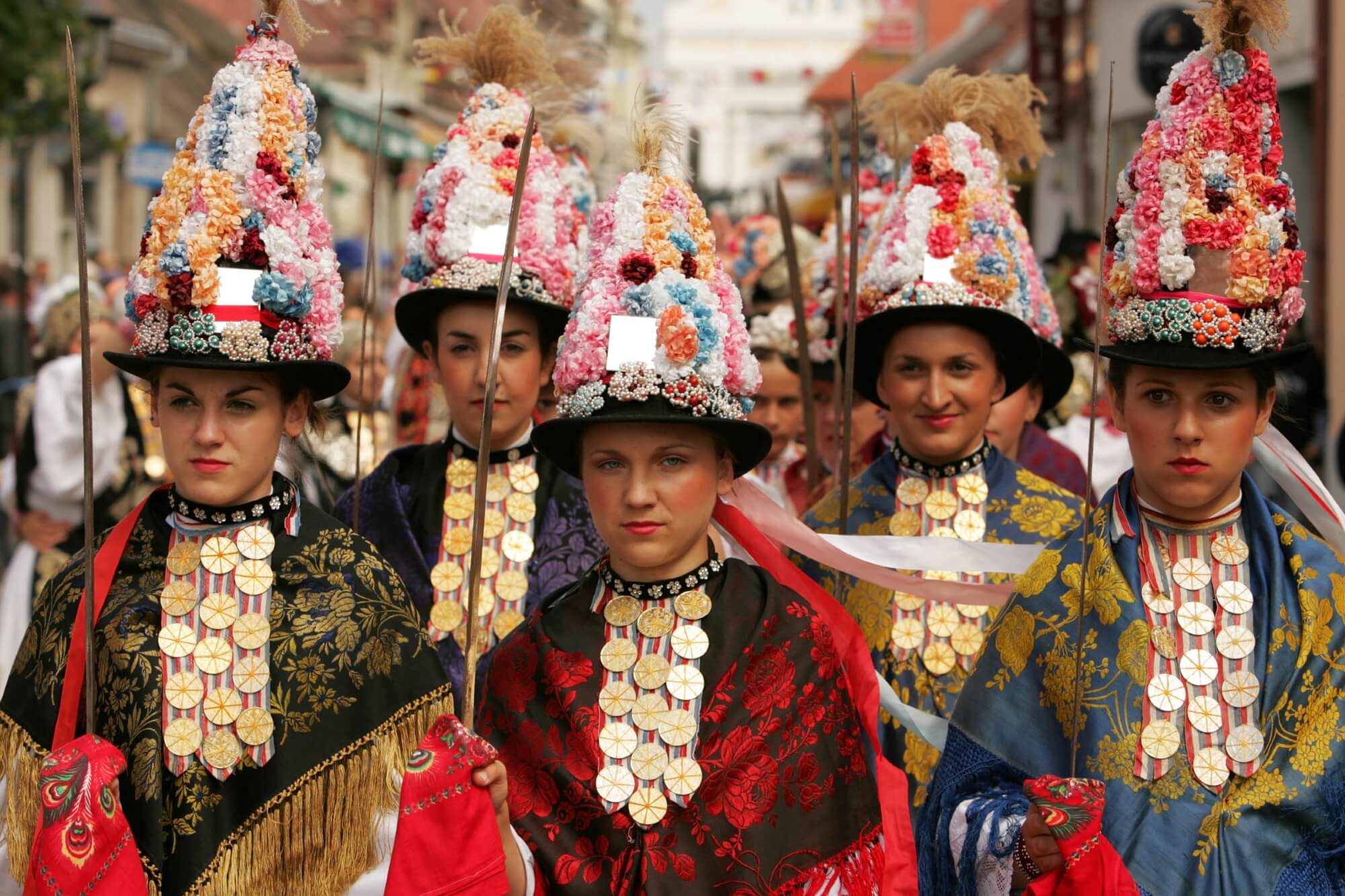 Cultural heritage preserved in one Slavonian village © Mario Romulić
Cultural heritage preserved in one Slavonian village © Mario Romulić
Non-material cultural heritage is also a part. That might be preserving old recipes of traditional, regionally-specific dishes. Or, it might be showcasing the songs and dance of local music.
We are currently running a project which is supported by the Croatian Ministry of Tourism and Sports in which we hold 37 Seoski Tourism workshops in the field all over Croatia. There will also be around 15 online workshops. The workshops are aimed at colleagues who currently operate in Seoski Tourism – they work in agriculture and offer hospitality. Also invited are local tourist boards and local action groups.
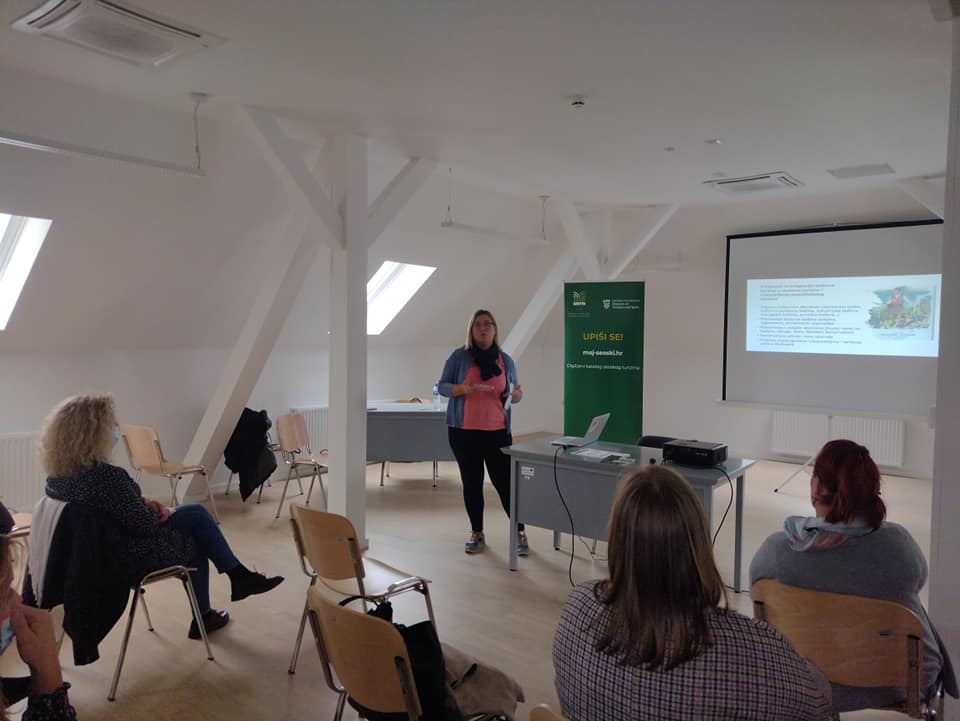 Photo from URTH workshop in Slatina
Photo from URTH workshop in Slatina
So far, we conducted 20 workshops in the regions of Central Croatia, Slavonia and Baranja, and Podunavlje. From next week until the end of the year, we will conduct the workshops in Istria, Kvarner, Lika and Dalmatia. Some service providers were not able to attend earlier workshops, because of work commitments of Covid. So, we decided to also offer access to the workshops online. Tomorrow is our first online workshop for Central Croatia and on Friday it's the online workshop for Slavonia.
These workshops are interactive discussions between our association, service providers and all other stakeholders. We discuss the legislative framework, which can be extremely complex. We talk about new trends in tourism for the post-pandemic era. We also discuss the importance of integrating cultural heritage in digital promotion.
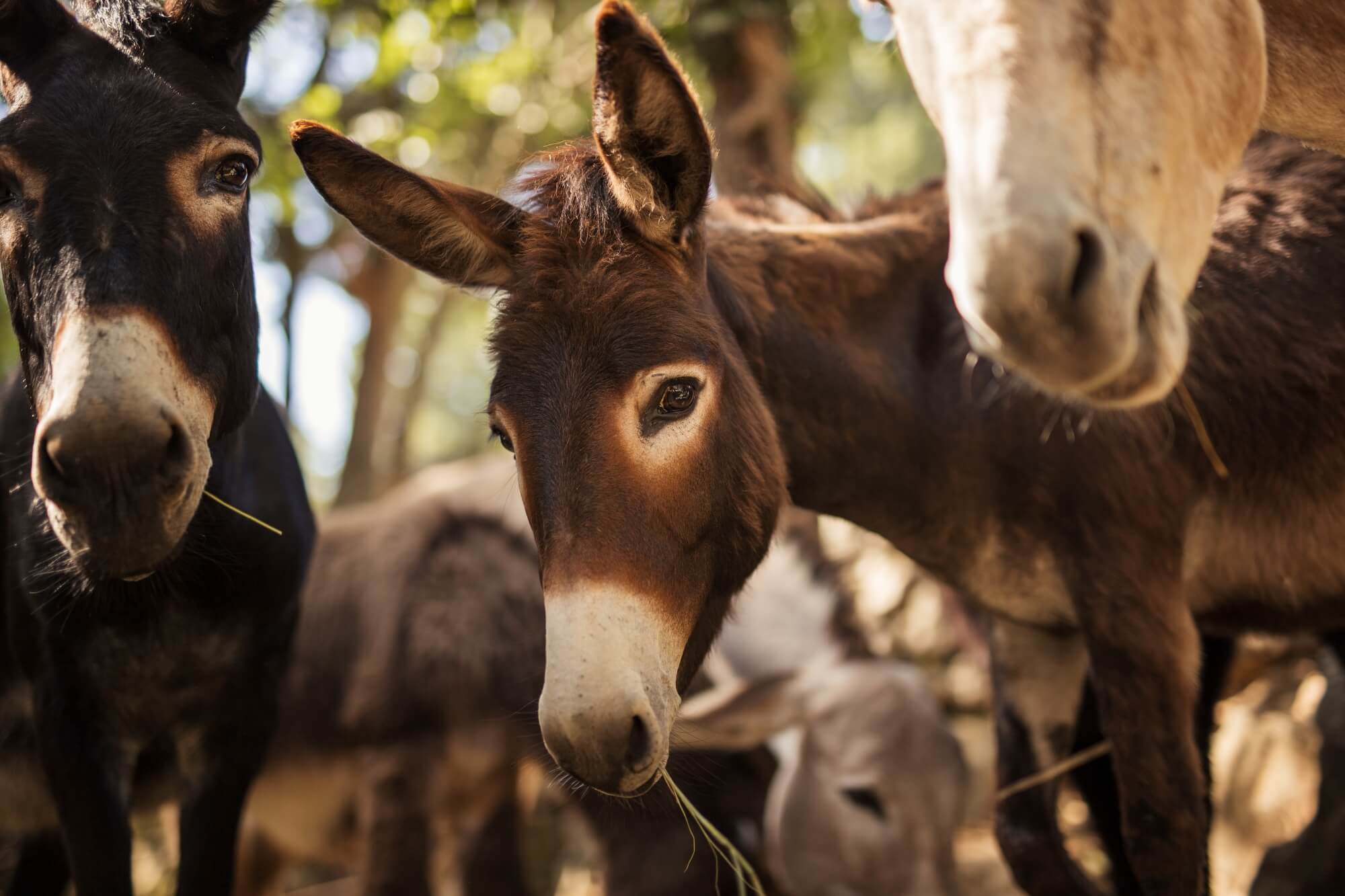 Donkey farm at Agroturizam Antunović on Pelješac
Donkey farm at Agroturizam Antunović on Pelješac
For the legislative framework, we have initiated the formation of a working group for the development of Seoski Tourism, which is now operating in the Croatian Ministry of Tourism and Sports. So, at the workshops, we ask if anyone is having issues. We collect the responses and address them in the working group.
Part of the workshop is the presentation of a new web application of Seoski Tourism, which we have developed with Croatian Ministry of Tourism and Sports. It has two purposes. One is to create a digital catalogue of Croatian Seoski Tourism. You can see region by region some of the Seoski Tourism options – currently around 40, those who have already enrolled.
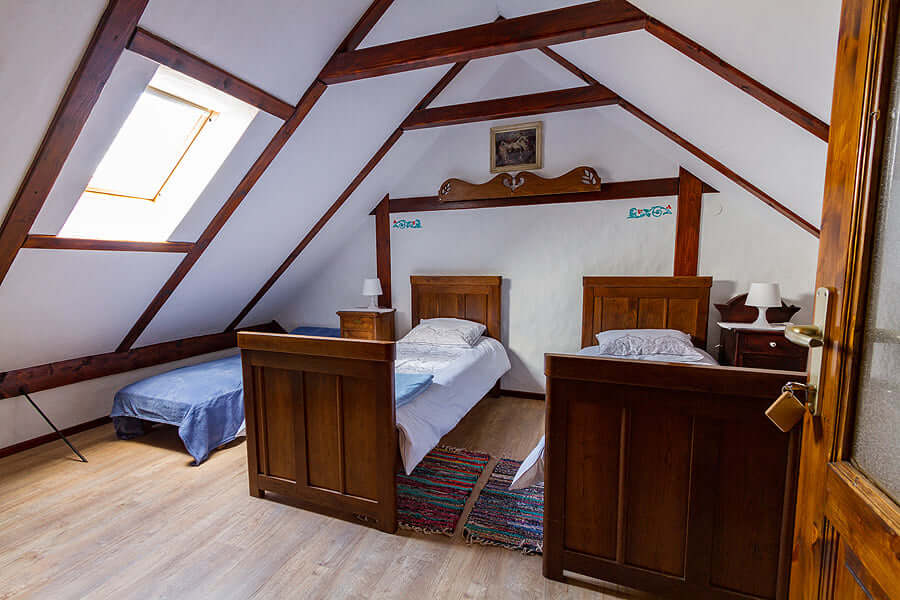 Podravina Etno rooms at Zlatni klas Otrovanec
Podravina Etno rooms at Zlatni klas Otrovanec
A version of the app is currently available on the website of the National Tourist Board. But, they are building a new website. The forthcoming version of the catalogue will likely be more user-friendly with many more functions and options. On the new website, Croatia's Seoski Tourism options will be detailed in many different languages. It should be a great resource not only for tourists but for travel agencies, journalists like you and for educational institutions. That's the reason we are devoting time in our workshops to encourage Seoski Tourism providers to enroll. We are just at the beginning of the process.
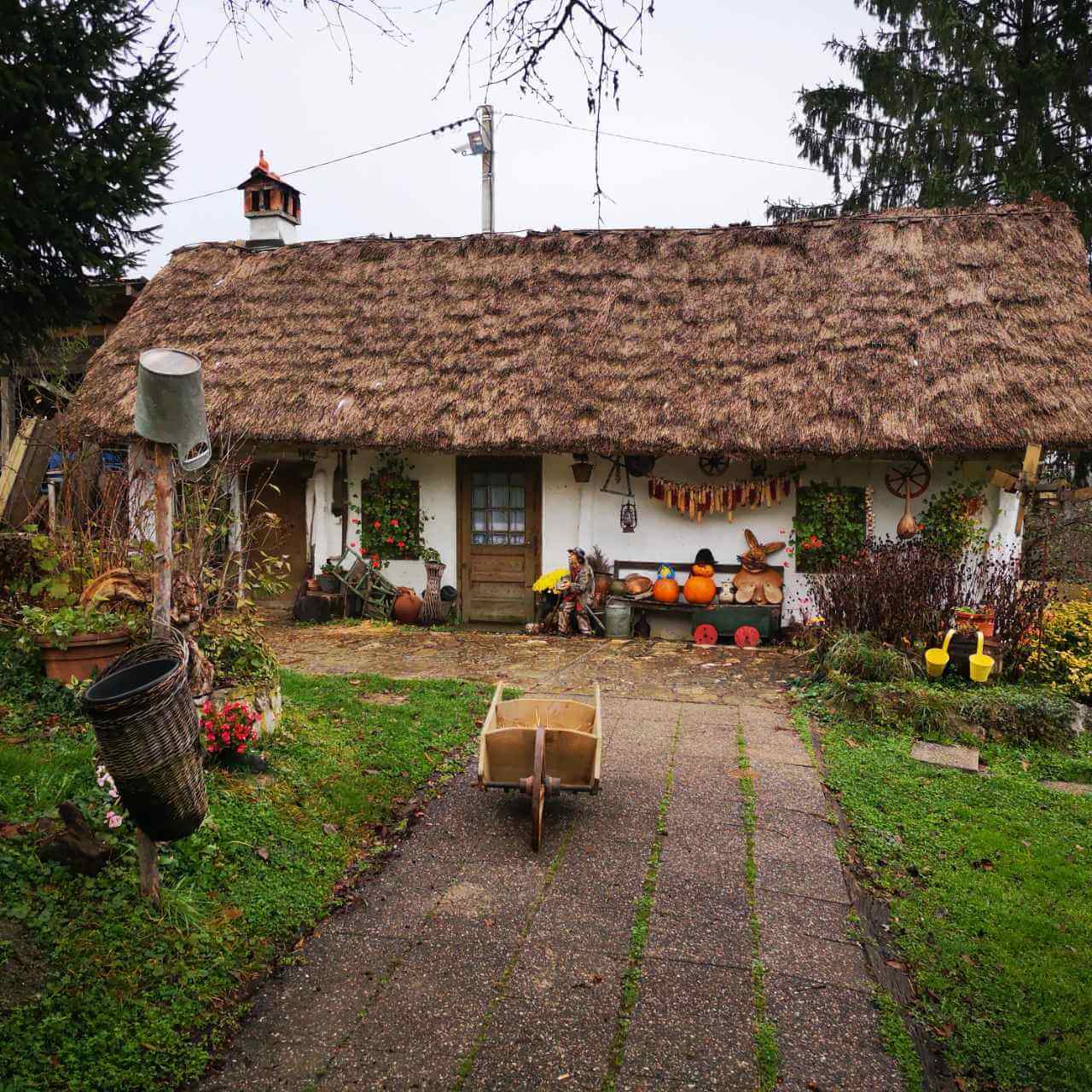 Grešna pilnica in Zagorje © Jasna Podboj
Grešna pilnica in Zagorje © Jasna Podboj
The second purpose of the app is to collect information about the service providers. This info will be used by our working group when defining a Croatian model of Seoski Tourism. So far, we have taken examples from Slovenia, Italy and other countries that are successful with Seoski Tourism. But, these models were entered into our legislative system without fully considering our distinct business and cultural environments. That is now about to change.
We are very happy that, following many years of partially successful advocacy, there is now political will at a ministerial level to really shape things up, to change the laws and regulations in order to facilitate Seoski Tourism. We want to encourage more Seoski Tourism, not to have people from agriculture being turned away because of the difficulty of the process and bureaucracy.
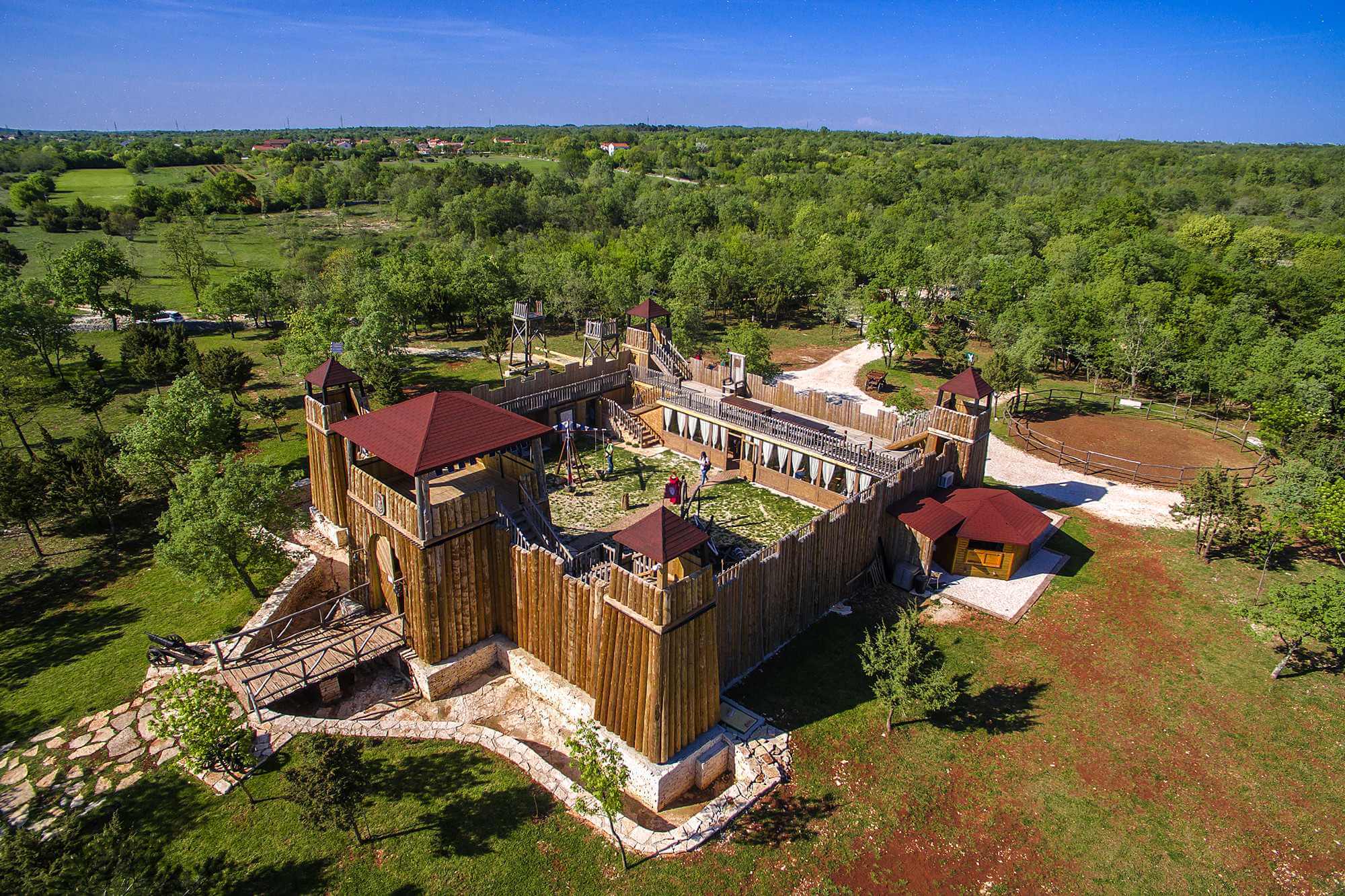 Medieval Theme Park San Michael © Silvia Otočan
Medieval Theme Park San Michael © Silvia Otočan
You said part of the workshops will focus on new trends. What are some of these?
Research has been done by a working group that is developing a new tourism strategy for Croatia. It's called Strategy for Sustainable Tourism to 2030. Under the auspices of this group, a number of research fields have been analysed.
The collected data shows that a huge percentage of tourists are now more inclined to eat locally grown and healthy food. They want to spend their time on estates that are run in accordance with ecological principles. So, they really care about issues like how waste is disposed of etc. They also pay a lot of attention to culture. They are curious to learn exactly how we are living, how we are working and how we produce things. They want to learn about our society and culture. And, importantly, they really care about how they spend their money. Above all, they want to spend money in areas that can help support local communities.
 Prigorje Breakfast at Rakić Family Farm
Prigorje Breakfast at Rakić Family Farm
For us, this is really important. Because Seoski Tourism answers these demands to an incredibly high level. We do produce local, healthy food. Not only on the agricultural estates where you can experience Seoski Tourism, but also from their neighbours who just do agriculture. We are concerned with ecology, we protect cultural heritage and the money spent in Seoski Tourism stays in local communities, where it has very beneficial effects.
In the digital promotion part of the workshops we are trying to persuade people about the importance of their online presence. Basically, these days, if you're not online, it's almost like you don't exist. So, we try to explain the importance of having good-quality photos, short videos and a regular online presence.
 Kulen, čvarci and other specialties at Baranjska kuća © Denis Despot
Kulen, čvarci and other specialties at Baranjska kuća © Denis Despot
That's interesting. In some cases, it might be like two different worlds colliding - people who work in a traditional industry and a traditional environment having to adapt to a very modern way of operating. There's also another potential collision when providers learn of the expectations within modern tourism. Because these people can no longer just work in agriculture. To operate in Seoski Tourism, you're also very much expected to also be a host.
Yes. All of our current service providers who are successful within Seoski Tourism are also great hosts. It's essential. You can see it in almost all of the reviews for this kind of tourism. Guests come for the food and drinks and surroundings, yes. But, what they value the most, what they remember the most, is the host part of the experience. On the estates of Croatian Seoski Tourism, guests are welcomed like family. Across all of Croatian tourism we are expected to be good hosts. It's part of our reputation and the reason why many people come here from all over the world. In Seoski Tourism, it is vital we live up to those expectations.
 Kezele family farm © Davor Konjikušić
Kezele family farm © Davor Konjikušić
Another aspect of this, which is a more recently-observed element, is that visitors often want an insight into the actual lives, even the personalities of their hosts. They want not only to taste the homemade sausages you make, but they also want to know how you do it, where you do it, how you learned to do that. When they go to Spain, they want to know how the people there make their wine. And, when they come to Croatia, they want to learn how we do it here.
So, all in all, those of us in Seoski Tourism are really busy. We are in agriculture, yes, but we are also in tourism and we are also online. With this more recently-observed aspect, we will need to try and devote even more time to our hosting. It can be difficult to balance the demands on your time. But, in our workshops, we are trying to persuade people to talk more about themselves, their lives, their cultural heritage. And, if there isn't time to do everything themselves, then to involve different and often younger generations of the family. Sometimes within the hosting or alternatively just with the online promotion and presence.
 Kezele family farm ethno collection © Davor Konjikušić
Kezele family farm ethno collection © Davor Konjikušić
I've visited some family farms that were right at the start of their journey with Seoski Tourism and they seemed surprised that I was at all interested in what they do and how they do it. I think maybe they thought I was a bit crazy.
Yes, that is a response we sometimes also see at first. I think it's because our generation takes a lot of things for granted. We sometimes think that what we do is just what we do. We are not so good at showcasing it. “Why would I show someone how I make my cheese? I make my cheese like my grandmother used to make it” But, for those who open their doors to Seoski Tourism, inquiries about how they do what they do are only increasing. So, they seem to appreciate how we advise them in the workshops.
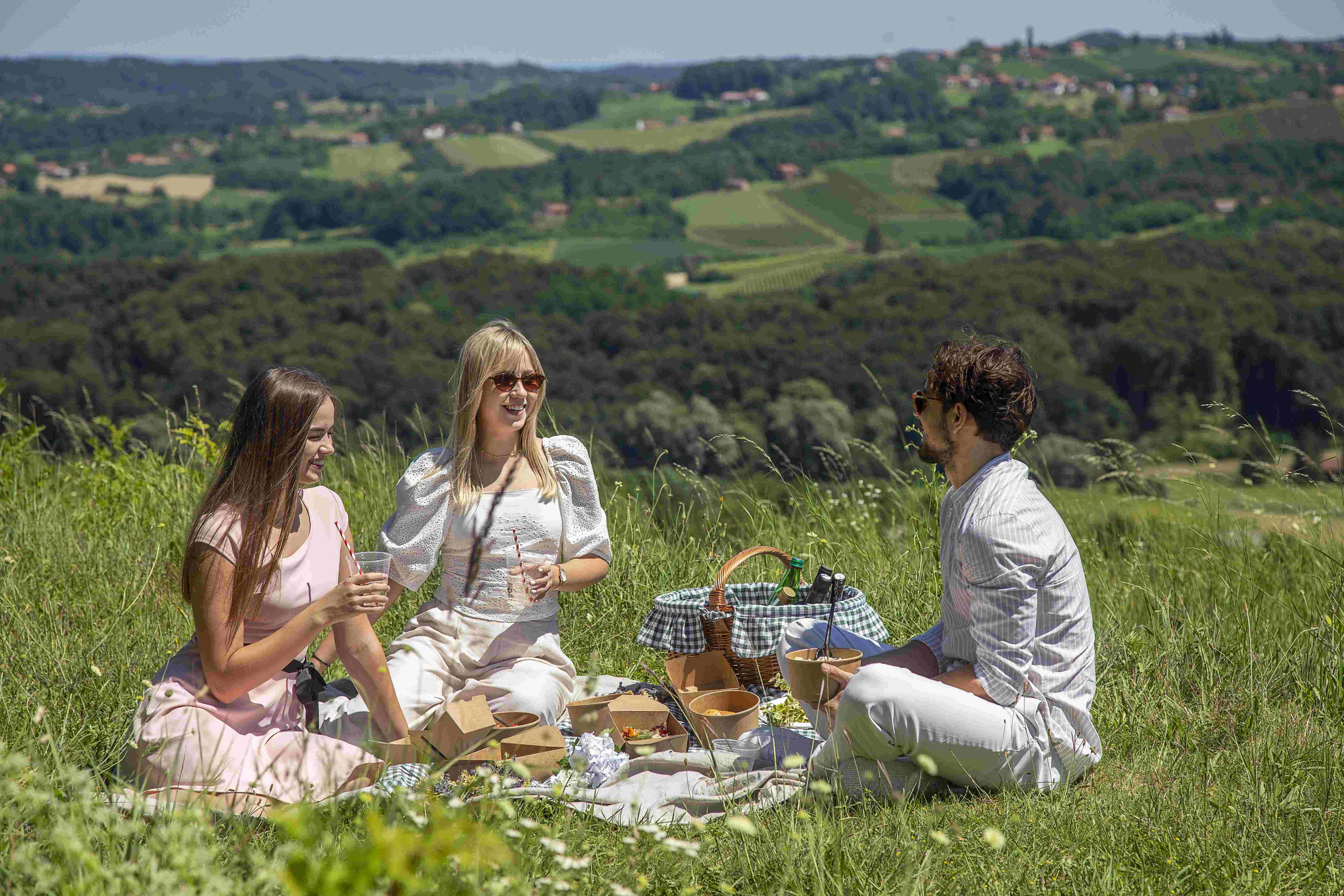 Picnic by Restaurant Međimurski dvori © Igor Nobilo
Picnic by Restaurant Međimurski dvori © Igor Nobilo
We are trying to let our producers know that Seoski Tourism is not just a platform to sell their produce and an overnight stay, but it's a full experience they can sell. There are agricultural farms in Austria that are established in tourism that you must pay only to visit. Of course, that doesn't happen currently anywhere in Croatia, even though some of our Seoski Tourism estates have sections that look like museums.
Some of these aspects are very new. And the feedback is great. I truly believe there are hidden treasures to be discovered in some Croatian villages. We are here to tell that story.
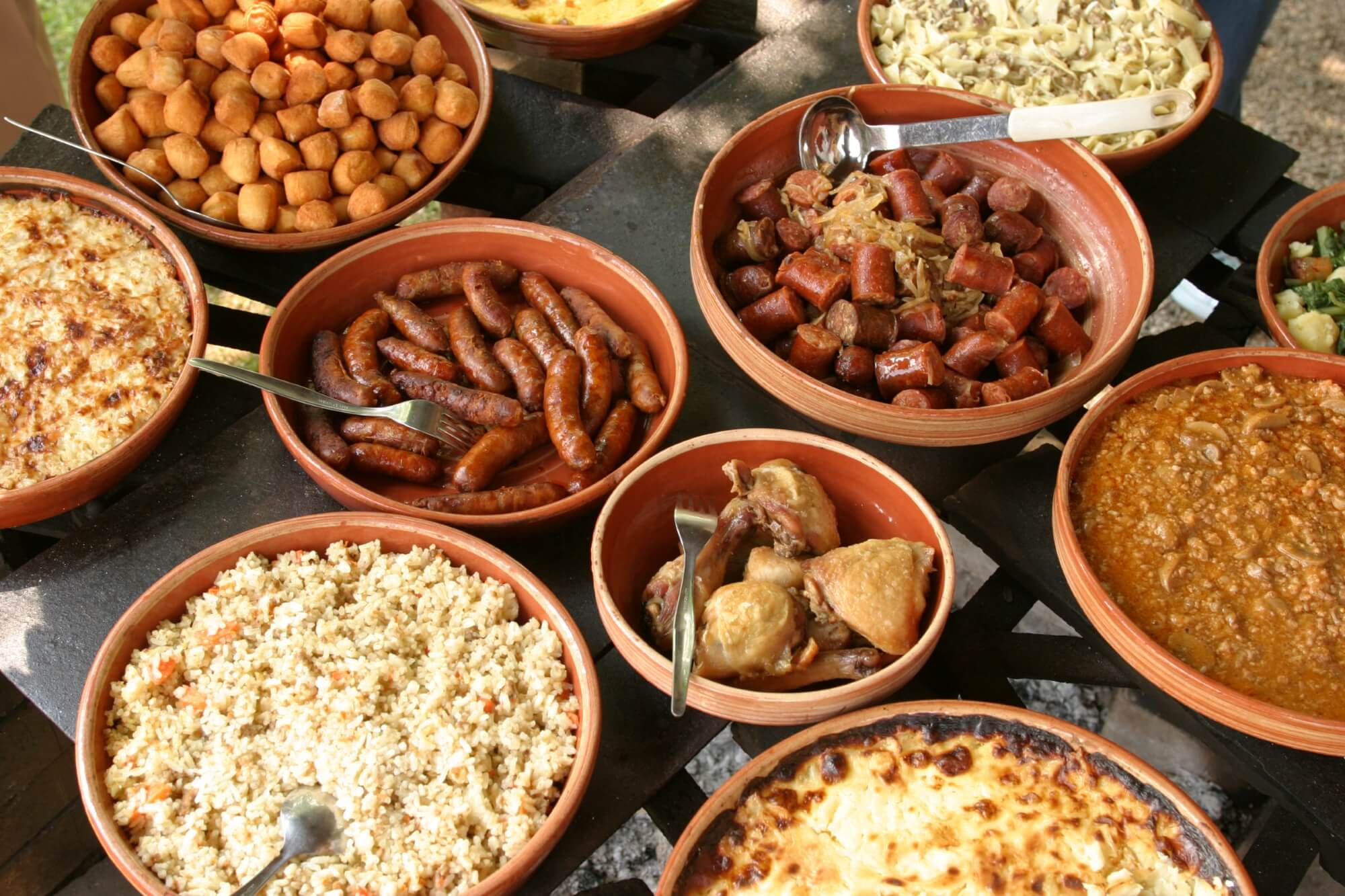 Selection of food from a Slavonian village © Mario Romulić
Selection of food from a Slavonian village © Mario Romulić
What is so rewarding about Croatian Seoski Tourism that international visitors would want to go to a traditional farm in some inland village instead of lying on the beach in Dalmatia for 14 days?
People come because they really want to see a different side of Croatia. And, there are many different aspects of Croatia to discover – not just Seoski Tourism, but also National Parks and Nature Parks. All of our current trends show us that more and more tourists are willing to come inland from the coast or to explore a different part of Croatia – inland Istria, for example, or continental Croatia.
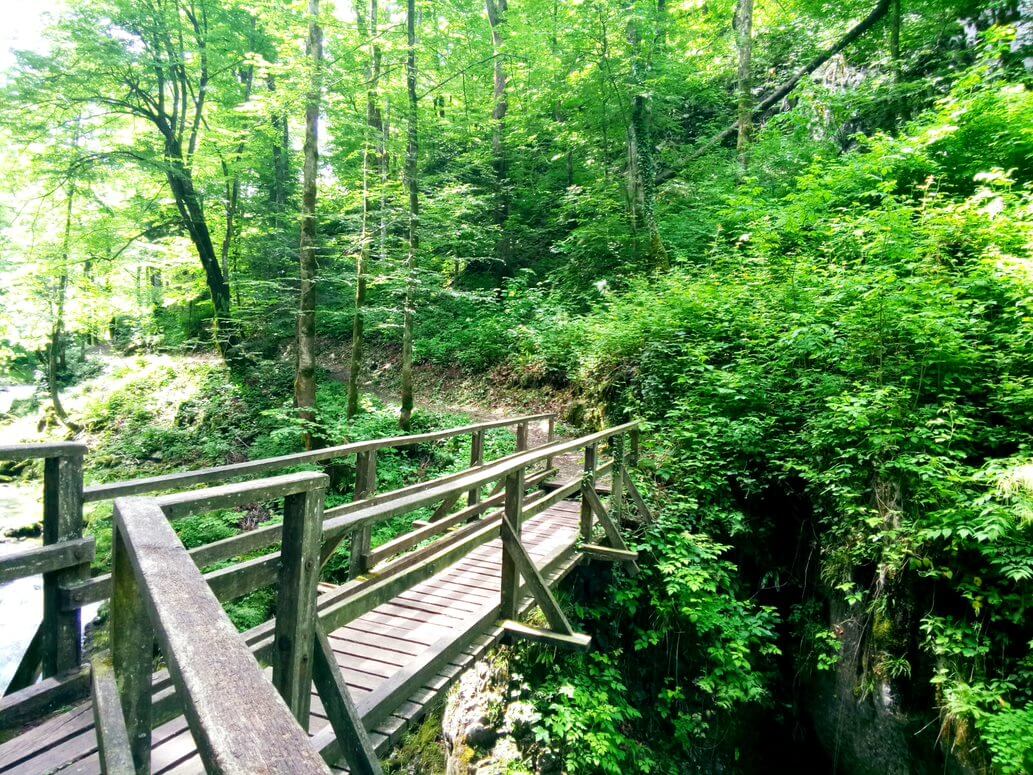 Kamačnik river canyon © Aleksandra Kuratko Pani
Kamačnik river canyon © Aleksandra Kuratko Pani
They really want to try authentic, local food. They want to eat healthy, to know what they are eating and how it is made. And, they want to experience flavours that are different from the usual ones they get from the supermarket.
 Traditional Međimurje table at Etno restaurant Međimurski dvori
Traditional Međimurje table at Etno restaurant Međimurski dvori
Also, I would say that with Seoski Tourism, people get to know better an authentic version of Croatia and its culture. It's a story we hear very often from our members. Some of them are visited by large groups from cruisers. These are people who might be on a cruise on the Adriatic and who journey inland for a day trip. Or, it might be a group who are cruising the Danube and disembark to visit a family farm in Slavonia, Baranja or Srijem.
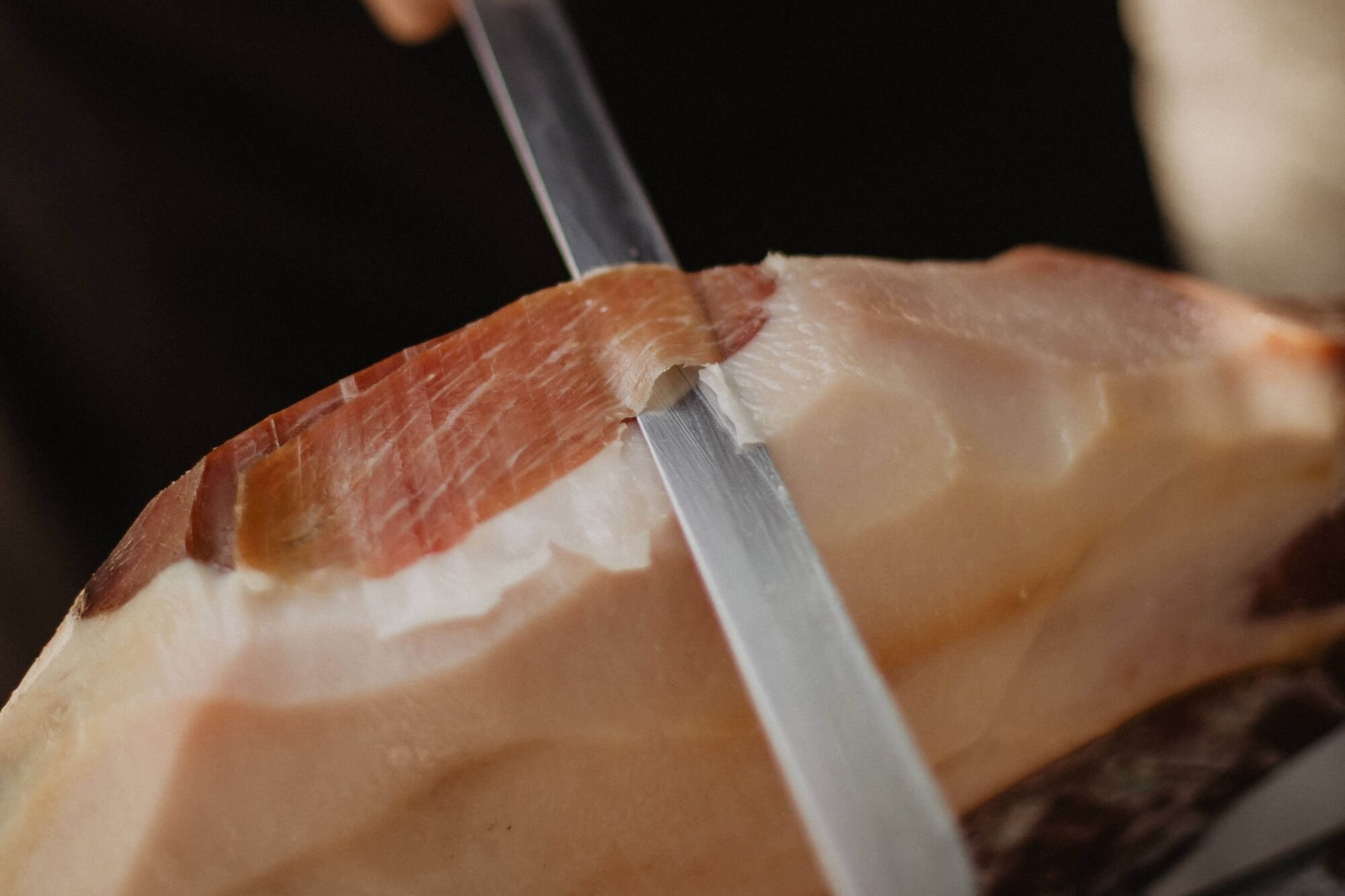 Prosciutto from Drniš at Agrotourism Kalpić © Ivana Kalpić
Prosciutto from Drniš at Agrotourism Kalpić © Ivana Kalpić
When they visit farming estates on day trips, it's very often a huge 'wow' moment for them. For many, in their minds, Croatia is simply sun and sea. And that's not entirely their fault. We, as a country, have done very little until now to promote alternative sides of Croatia. The visitors experience these wow moments because of the hospitality they receive and because of the tangible aspect of the visit. This is a modern aspect – people want to touch things, know how things feel, taste, smell. They want to ride on horses or feed them. Or take part in cultural activities. These parts of a visit to Seoski Tourism are very difficult to experience anywhere else.
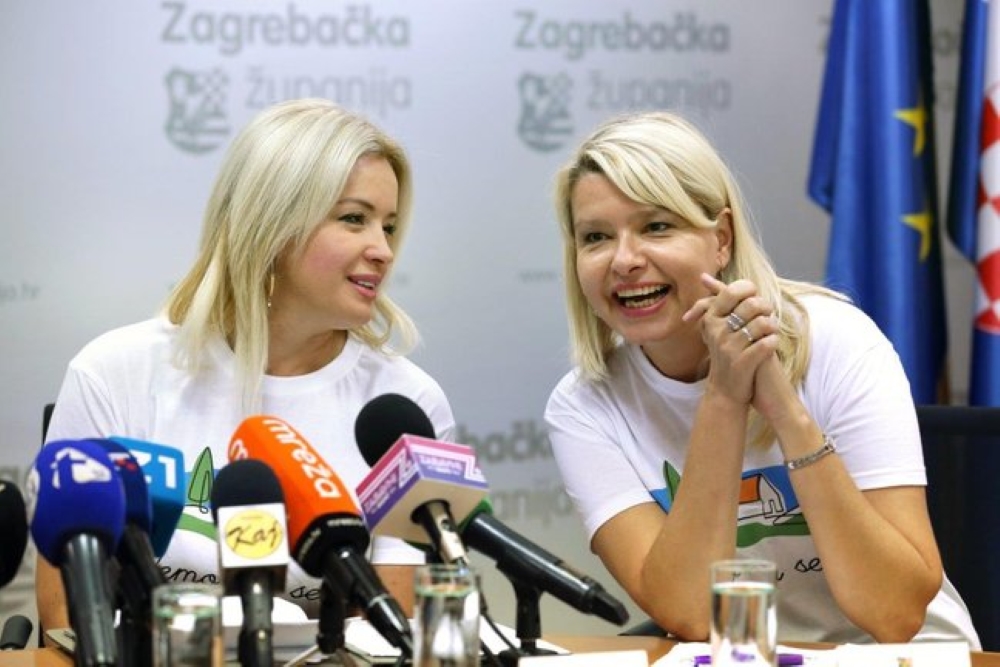 (left) Ivana Alilović, director of Zagreb County Tourist Board (right) Aleksandra Kuratko, secretary of Udruga ruralnog turizma Hrvatske (Croatian Rural Tourism Association) © Zagreb County
(left) Ivana Alilović, director of Zagreb County Tourist Board (right) Aleksandra Kuratko, secretary of Udruga ruralnog turizma Hrvatske (Croatian Rural Tourism Association) © Zagreb County
Udruga ruralnog turizma Hrvatske's online Seoski Tourism workshops begin today and their physical workshops continue next week in Istria.
If you'd like to read more about rural tourism in Croatia, then look here
OPG Čudesna šuma: Paradise Reimagined in Beautiful, Traditional Baranja
May 13, 2021 – OPG Čudesna šuma: How an unexpected turn of events helped world-renowned photographer Mario Romulić realise his lifelong dream.
War and genocide and the aftermath. Famine. Disease. Death. In a former life, harrowing images filled the lens of internationally renowned photographer Mario Romulić. But thankfully, we're now far from such scenes.
In fact, at OPG Čudesna šuma - Mario Romulić's home and family farm - we're pretty much far from everything. One other eco-farm is his only neighbour. Well, unless you count the llamas the Romulić family keep out back. Occasionally, through the rich green of surrounding trees, you see birds flying above the branches. Probably they're toing and froing from Kopački rit. The nearby Nature Park is less than a kilometre from OPG Čudesna šuma. Famously, the wetlands are home to over 250 species of birds. They are also the reason why Mario Romulić is here.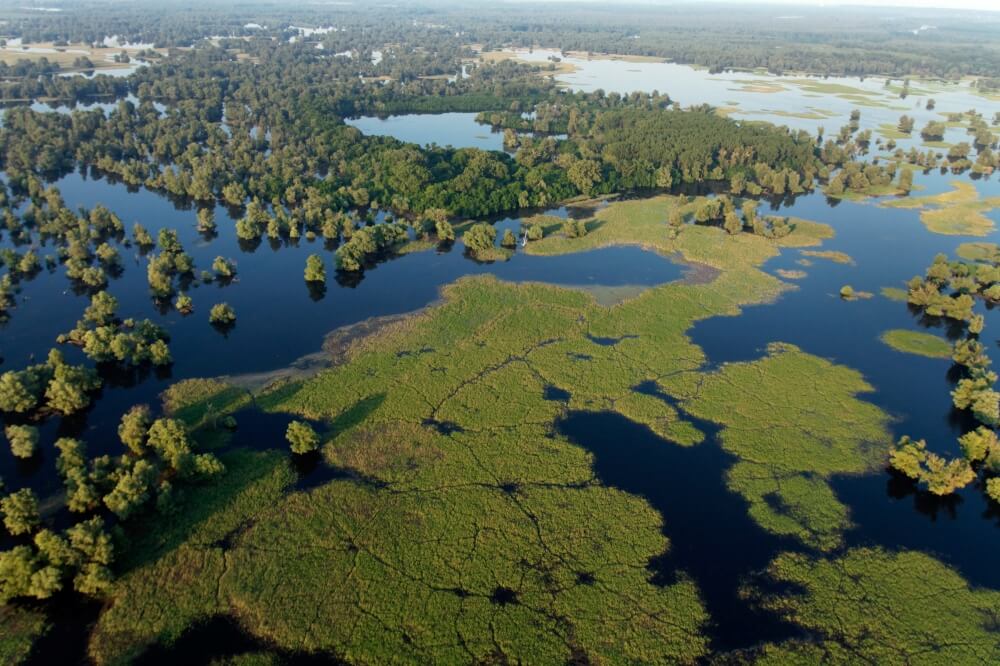 Kopački rit Nature Park © Kopački rit Nature Park.
Kopački rit Nature Park © Kopački rit Nature Park.
“Back then, I was very occupied with Kopački rit,” remembers Mario of the time, 21 years ago, when he moved to what is now OPG Čudesna šuma. “I was working as a cameraman for people like Reuters, all over the world. The assignments would last 7-10 days and I'd be in places like Afghanistan, Rwanda, Congo, Liberia, Bosnia. It was often quite dangerous. For the next 20 days, I would spend a lot of time in Kopački rit, trying to calm my nerves. It was something like a cure after seeing all these horrible scenes. Eventually, instead of travelling every day from my home in Osijek to Kopački rit, I decided to try and find something close by. And this is what I found.”
Just as this beautiful, natural landscape in Bilje, Baranja once served as a peaceful getaway for Mario Romulić, his OPG Čudesna šuma today does the same for others. Because, after dreaming for two decades of turning this blissful plot and homestead into a forest farm and eco-village, Mario Romulić is finally turning that vision into a reality.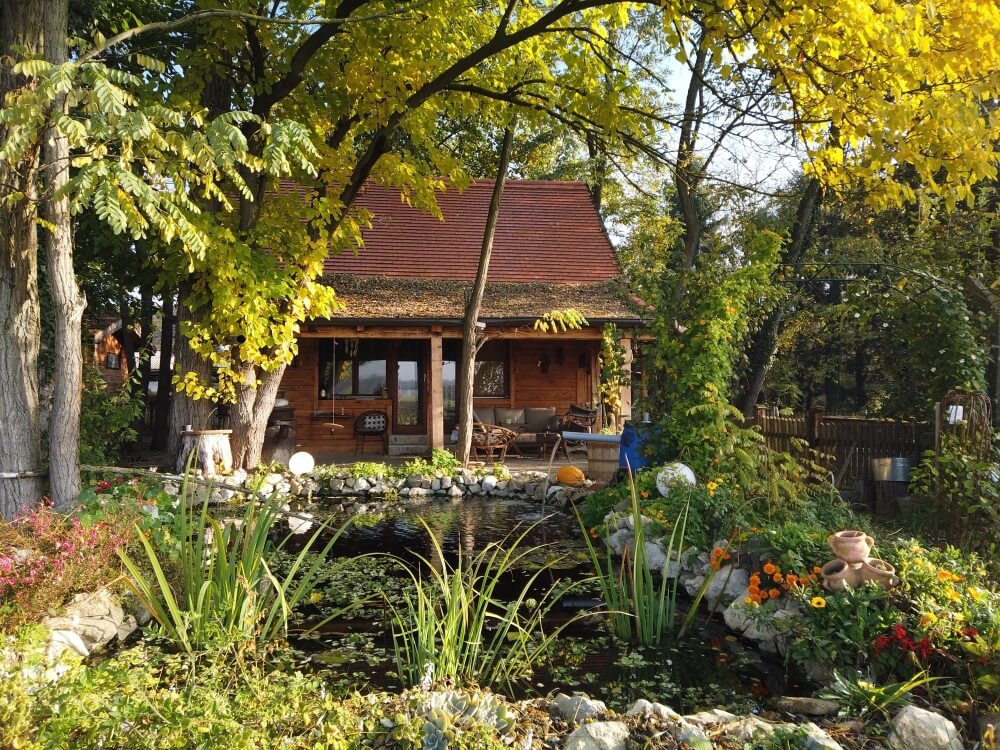 The impossibly pretty OPG Čudesna near Kopački rit Nature Park, Bilje Municipality, Baranja © OPG Čudesna šuma.
The impossibly pretty OPG Čudesna near Kopački rit Nature Park, Bilje Municipality, Baranja © OPG Čudesna šuma.
“Because of my job - first, travelling all around the world, then travelling Croatia - I did not even have much time to think about it, let alone do it,” says Mario. “But, then Corona came. Finally, I found myself at home. At last, I had time to work on my dream.”
OPG Čudesna šuma in the Month of Baranja Cooking (Mjesec baranjske kuhinje)
A group of 30 or so are Mario's guests today at OPG Čudesna šuma. They're here for a presentation of speciality cooking. It's the grand finale of the Month of Baranja Cooking (Mjesec baranjske kuhinje).
Over previous weeks, OPGs from all across the region have welcomed guests to try goulash, soups, stews, perklet and other traditional foods of the area. While visiting, they've been embraced by the beautiful landscape of Baranja. Not only have they discovered how this delightful, distinct cuisine tastes, but also they've learned exactly how it's prepared. However, they've evidently saved the best for last. On the menu today, river fish inventively cooked, accompanied by a riotous rainbow of seasonal vegetables. Seasonal vegetables of Baranja in springtime at the Month of Baranja Cooking (Mjesec baranjske kuhinje) © OPG Čudesna šuma.
Seasonal vegetables of Baranja in springtime at the Month of Baranja Cooking (Mjesec baranjske kuhinje) © OPG Čudesna šuma.
It's a beautifully sunny day, right at the start of May. It depends on your preference, but looking across this happy vista in the glorious sunshine, it's difficult to imagine this not being the perfect time to be in Baranja. Young children are raised to chest height by their parents so they can meet Mario's free-roaming llamas face-to-face. The children's faces flit between surprise, curiosity and delight. The llamas return their stare. They're used to welcoming new guests. Meeting the Romulić family llamas at OPG Čudesna šuma © Turistička zajednica Općine Bilje - Kopački rit.
Meeting the Romulić family llamas at OPG Čudesna šuma © Turistička zajednica Općine Bilje - Kopački rit.
Partially shaded by trees, the smiling adult guests sit casually on wooden benches around a central, outdoor cooking area. Several open fires display a range of traditional cooking methods. Steam rises from a cast-iron stove suspended over one. Beneath the vapours, you can make out the dish is fish paprikash. It's unmistakable because of the deeply red coloured bubbles, a result of generous amounts of paprika.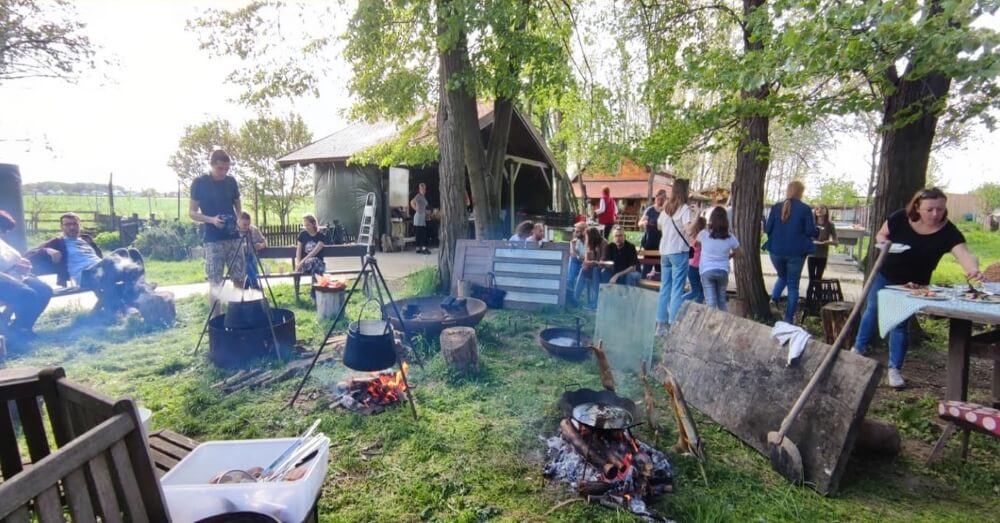 Guests enjoy a warm springtime day at OPG Čudesna šuma during the Month of Baranja Cooking (Mjesec baranjske kuhinje), as fish paprikas cooks over an open fire © OPG Čudesna šuma.
Guests enjoy a warm springtime day at OPG Čudesna šuma during the Month of Baranja Cooking (Mjesec baranjske kuhinje), as fish paprikas cooks over an open fire © OPG Čudesna šuma.
A huge bag of this paprika sits propped up, close by. It's from another organic OPG, just a kilometre or so from here. The colour is vivid, impossibly red, unrecognisable from anything store-bought. At the next fire, pike impaled on wooden sticks are placed far enough from the flickering flames so they cook slowly and do not burn.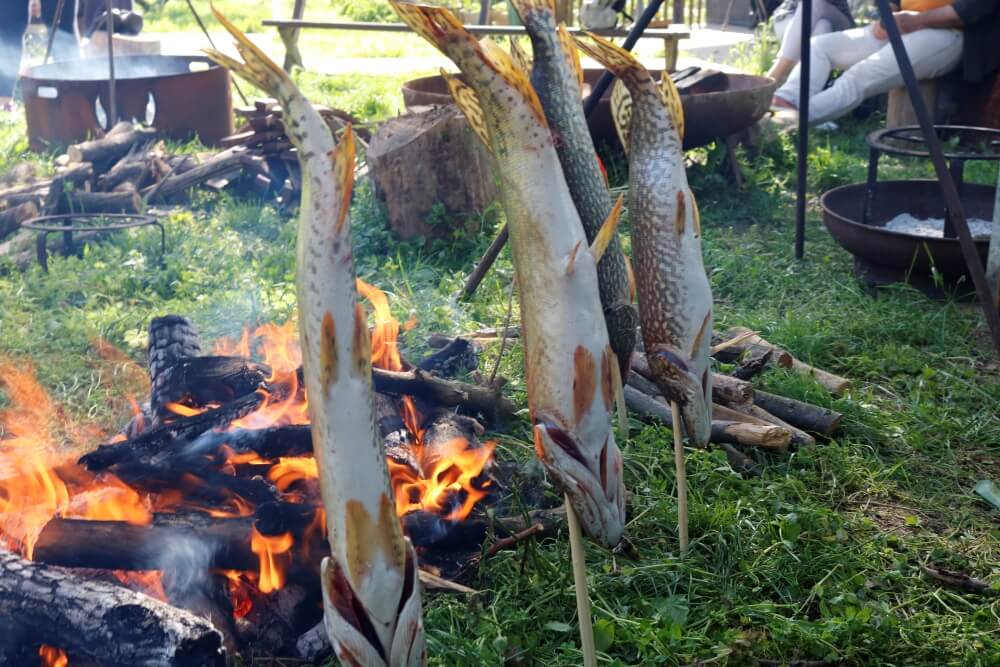 Pike impaled on sticks, cooking by an open fire at OPG Čudesna šuma @ Marc Rowlands.
Pike impaled on sticks, cooking by an open fire at OPG Čudesna šuma @ Marc Rowlands.
In the outdoor kitchen, Mario Romulić's co-chefs prepare an unending supply of fish dishes and vegetables. Carp, catfish, trout, bream. There's a bounty of fresh asparagus. It's that time of year. With the restraint of experience, they've cooked it perfectly. After the crunch of the bite, the flavour explodes. They're seasoned simply – delicious olive oil and sea salt.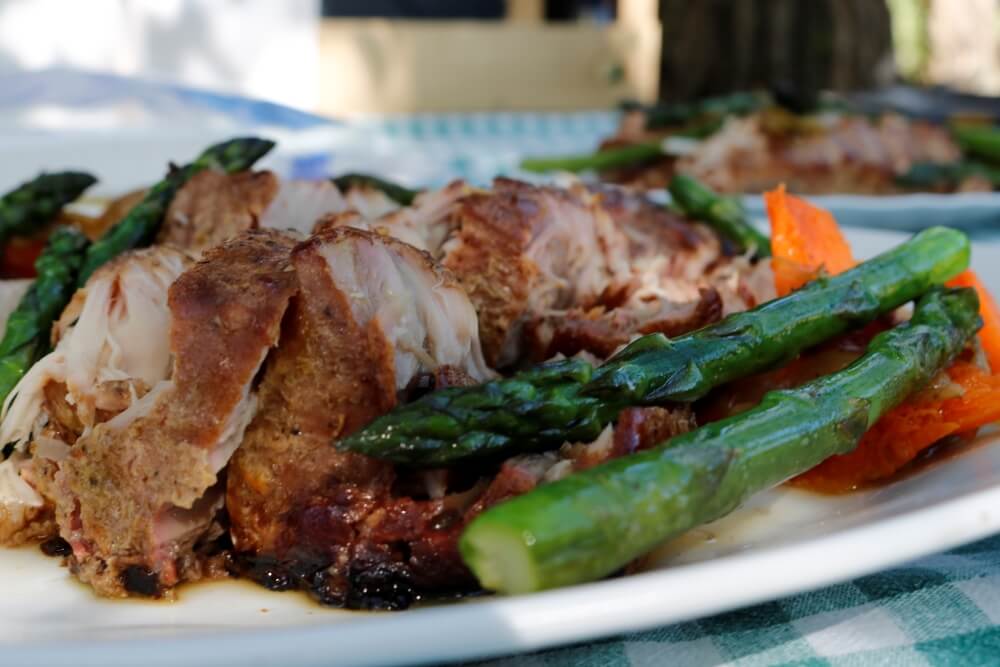 Seasonal asparagus, perfectly cooked, served with smoked river fish © Marc Rowlands.
Seasonal asparagus, perfectly cooked, served with smoked river fish © Marc Rowlands.
A group of peers – accomplished chefs from Osijek-Baranja restaurants – peak over the shoulders of Romulić's co-chefs. They're admiring the inventive techniques employed. Although, being chefs, they can't help themselves. They end up briefly forgetting their families in order to help out.
Mario Romulić, the host with the most
 Mario Romulić © Turistička zajednica Općine Bilje - Kopački rit.
Mario Romulić © Turistička zajednica Općine Bilje - Kopački rit.
After all the guests arrive, Mario Romulić holds court. Cheerily he welcomes us all to OPG Čudesna šuma and the event. Without question, the success of rural, village tourism depends on the personalities of the hosts. It's no good plonking a group of visitors in a pretty place and throwing some food in front of them. We've all seen trees, grass and food before. Rural tourism is not just about the place, it's about the experience, the ambience. And, especially, it's about the people.
Hands down, the OPGs of Slavonia and Baranja are the best in Croatia at this. The folks here are famous for their friendliness, warm welcome and big personalities. And, Mario Romulić has one of the biggest of them all.
In the research for this reportage, looking back at archive pictures of Mario Romulić is startling. During his years spent as an international photographer, he himself has been photographed many times – on assignment in distant countries, at the opening of exhibitions that have showcased his celebrated work. In most, there's an intensity to his stare. It's sometimes difficult to look at. He looks like a man who has tales you never want to hear, like a man who has seen too much.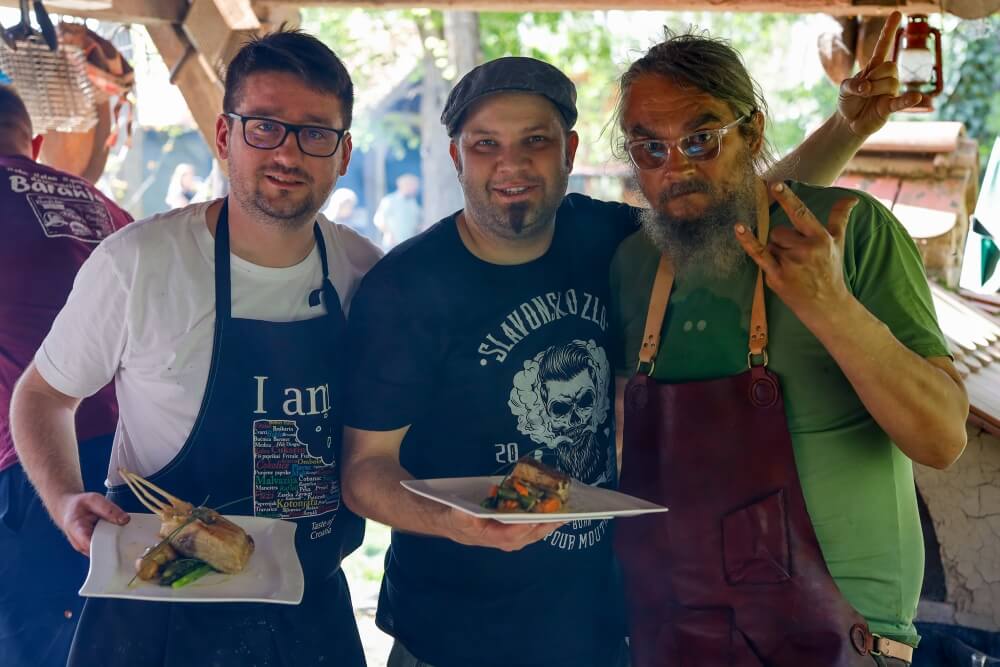 (L- R) OPG Čudesna šuma co-chef at the event Mihael Tomić, renowned Osijek chef Ivan Đukić currently of Osijek's Lipov Hlad and a happy Mario Romulić © Turistička zajednica Općine Bilje - Kopački rit.
(L- R) OPG Čudesna šuma co-chef at the event Mihael Tomić, renowned Osijek chef Ivan Đukić currently of Osijek's Lipov Hlad and a happy Mario Romulić © Turistička zajednica Općine Bilje - Kopački rit.
By comparison, the Mario Romulić that welcomes us at OPG Čudesna šuma today is unrecognisable. Sure, there's a little more grey to his long hair and beard but, otherwise, he looks incredibly healthy and happy. The intense stare is gone, replaced by a warm, wide smile that shows across his entire face. Even in early May, he has a darkened skin tone, the telltale signs of a man who spends much of the day outdoors. Romulić's enthusiasm for his guests and the event is palpable. After his sincere welcome, this enthusiasm is immediately transferred to each of his guests.
Mrs Romulić ensures everyone's glass is overflowing with wine or juice. One of Mario's teenage sons helps out with the food, while the other is taking photographs of the event. Well, someone has to do the photography now that dad wants to be a chef and host! Mario himself is engulfed in smoke. Among the other duties he's assumed today, Mario is tending a smoker. Without a doubt, this is the most revelatory cooking method we meet today.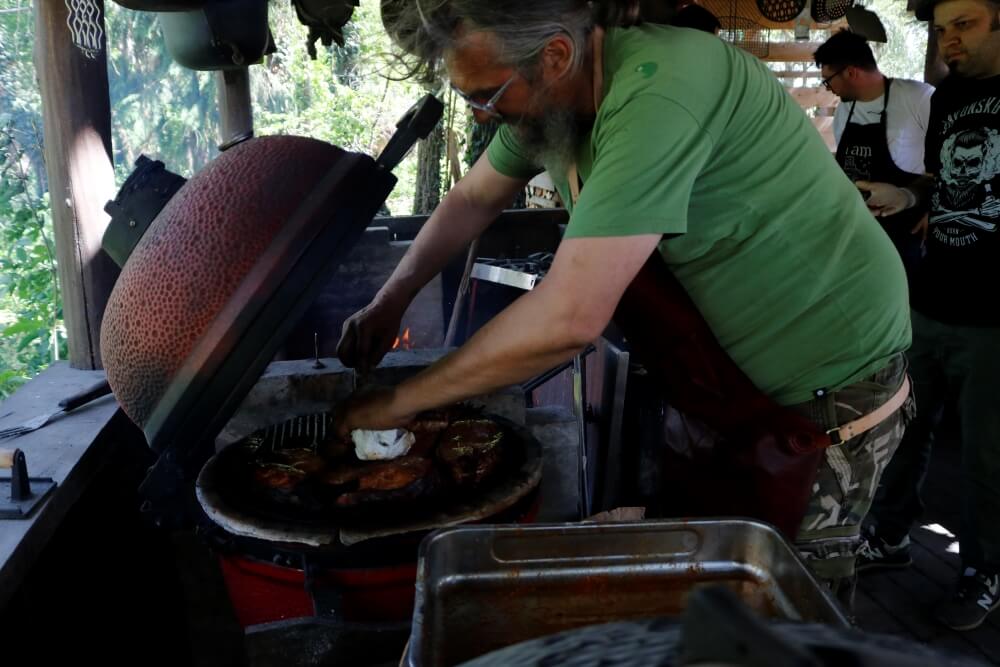 Mario Romulić tends to smoked river fish, a revelatory gastronomic experience at OPG Čudesna šuma © Marc Rowlands.
Mario Romulić tends to smoked river fish, a revelatory gastronomic experience at OPG Čudesna šuma © Marc Rowlands.
Smoked fish of Slavonia and Baranja at OPG Čudesna šuma
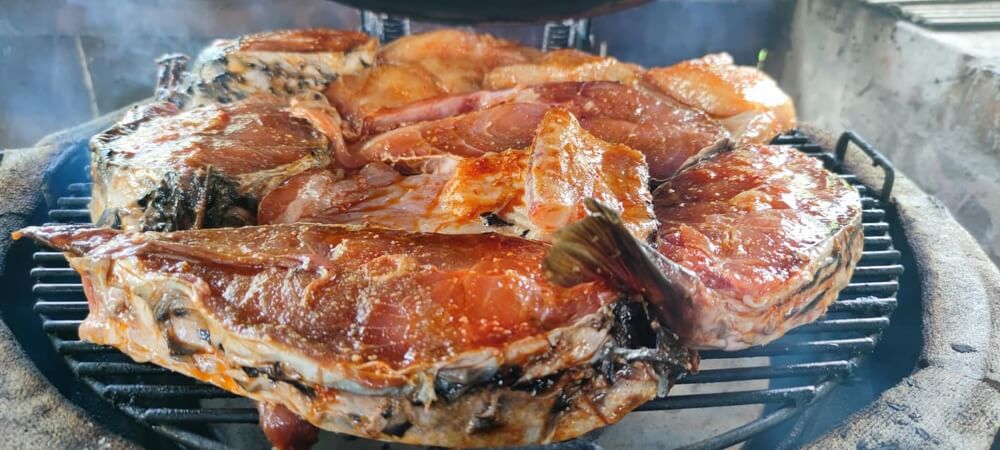 An American-style smoker, loaded with river fish. TOP TIP: A great way to stop fish sticking to the grill of your barbecue or smoker is to place them on top of a layer of lemon slices © OPG Čudesna šuma.
An American-style smoker, loaded with river fish. TOP TIP: A great way to stop fish sticking to the grill of your barbecue or smoker is to place them on top of a layer of lemon slices © OPG Čudesna šuma.
“We do have smoked fish here, but not in this way,” he says. “This is more like an American grill. I never heard of anyone trying Baranja cooking like this. Actually, I never heard of anyone nearby who has a smoker like this. The first time I tried stuka (pike) in the smoker, that was unbelievable. It's incomparable, really special.” Exquisite presentation of river fish by the enthusiastic team of OPG Čudesna šuma © Turistička zajednica Općine Bilje - Kopački rit.
Exquisite presentation of river fish by the enthusiastic team of OPG Čudesna šuma © Turistička zajednica Općine Bilje - Kopački rit.
“In Slavonia and Baranja, there are just a few ways we usually cook our river fish - carp on sticks, fish paprikash, perklet and fried fish. So, we tried something new, to expand the palette. For instance, almost nobody eats Babuška (a type of carp). They feed it instead to their pigs. It costs 5 kuna a kilo! But, if you cook it in this completely natural way, it's delicious.”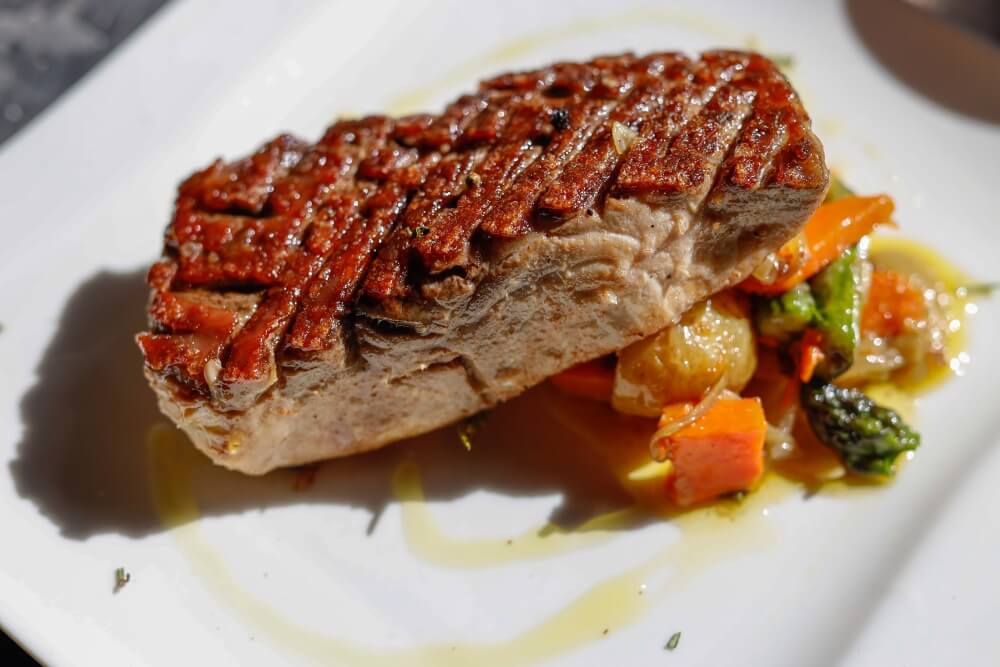 More river fish, cooked by the team of OPG Čudesna šuma © Turistička zajednica Općine Bilje - Kopački rit.
More river fish, cooked by the team of OPG Čudesna šuma © Turistička zajednica Općine Bilje - Kopački rit.
He's not wrong. Today's mountain of different smoked fish is the talk on most of the adult lips. The rich flavours surprise. Compliments and returns for second helpings ensue. Mario stands to one side, happily watching as his smoked fish secret escapes. In the future, he plans similar events based on other regional foods - Black Slavonian pig, wild meats like deer or boar. Eventually, in the seven hectares of land he owns here, he would like to expand OPG Čudesna šuma as an eco-village, with beds for visitors, a natural swimming pool and then surround it with a food forest. Big plans. It looks as though the camera may stay more permanently in the hands of his son. Because it's difficult to imagine Mario Romulić leaving his happy place and the realisation of his long-held dream. Mario Romulić in his happy place, with a friend © OPG Čudesna šuma.
Mario Romulić in his happy place, with a friend © OPG Čudesna šuma.
Both the author and Total Croatia News would like to thank the following for their invaluable help in creating this article: Ivana Jurić and the Tourist Board of Osijek-Baranja County, OPG Čudesna šuma, Mario Romulić and family, Renata Forjan and Turistička zajednica Općine Bilje - Kopački rit and Domagoj Butković of expert travel guides to Slavonia and Baranja, Kulen travel.
Tourism Opportunity for Rural Areas in Croatia and Region
ZAGREB, Sept 27, 2020 - Tourism is an opportunity for the development of rural areas, but urban and mass tourism should be avoided there, experts said on the occasion of World Tourism Day, September 27, which this year is dedicated to the topic of "Tourism and Rural Development".
World Tourism Organisation UNWTO chose the topic of World Tourism Day 2020 before the pandemic, and the demand for tourist services has this year been more pronounced in rural areas than in cities and big destinations, mostly due to health reasons.
Something similar has also happened in Croatia, Serbia and Montenegro, said experts on rural tourism from the three countries.
What those countries and the entire region have in common is that rural areas make up about 90% of the total area, which is mostly neglected and unused and suffers from the rural flight, which is, according to experts, a great shame because the area has great potential to develop due to its authentic natural, traditional, historical and cultural values.
After Istria, which was among the first to start, nearly all parts of Croatia are developing tourism in rural areas. They offer not only family-run farms but also wine and heritage hotels, different tourist attractions, and activities in the countryside, said Dijana Katica, president of Croatian tourism and rural development association.
She thinks that COVID-19 in a way contributed to demand, and now is the right time to start planning the promotion of rural tourism for 2021 and further development of rural areas because of EU funding.
"In the entire region, including Croatia, the biggest problem is the low level of public awareness that tourism can present an opportunity for the development of villages and rural areas, that it can be a source of income. There is no tradition of tourism there," said the head of the Institute for Tourism, Damir Kresic.
He also said that care should be taken that tourist activities do not have too much of an impact on the environment and nature.
According to him, rural areas have the potential for development, which can be seen from official data -- family-run farms generated more than 66,300 overnight stays in the first eight months, which is less than 1% of the total number but compared with other accommodation facilities, they came very close to last year's results and stand at 78%.
"It can be said that the crisis has harmed them the least and that it has put the spotlight on that type of tourist services," Kresic said, adding that rural tourism also makes the tourist season last longer.
For the latest travel info, bookmark our main travel info article, which is updated daily.
Read the Croatian Travel Update in your language - now available in 24 languages
Join the Total Croatia Travel INFO Viber community.
EC Opens Public Consultation on Long-Term Vision for Rural Areas
ZAGREB, September 7, 2020 - The European Commission on Monday opened a public consultation on the long-term vision for rural areas, on the basis of which next year it will propose measures for the realisation of that vision, Commission Vice-President for Democracy and Demography Dubravka Suica said.
"Rural areas are often faced with challenges such as distance, poor connectivity and limited services. However, they abound in great opportunities with a matchless quality of life and can play a special role in the transition towards a green, digital and sustainable Europe. Based on these consultations we will present the long-term vision for rural areas to help them cope with these challenges and make them more attractive and dynamic. We will propose measures, including short-term ones, to achieve the long-term vision," Suica said.
The consultation will be conducted online until November 27.
For the latest travel info, bookmark our main travel info article, which is updated daily.
Read the Croatian Travel Update in your language - now available in 24 languages


